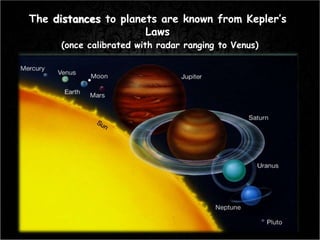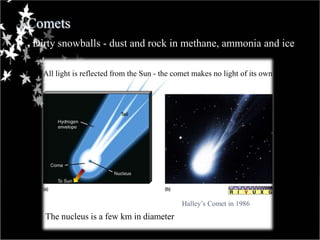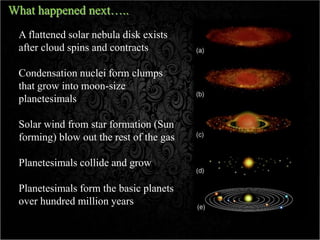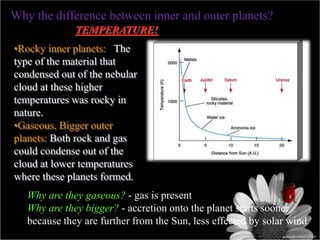The document summarizes the key components of the solar system. It describes the terrestrial and Jovian planets, asteroids, meteoroids, and comets. It also outlines theories for how the solar system formed from an initial nebula of dust and gas, including how planets condensed from this nebula via accumulation of dust particles and subsequent collisions of planetesimals over hundreds of millions of years.



















